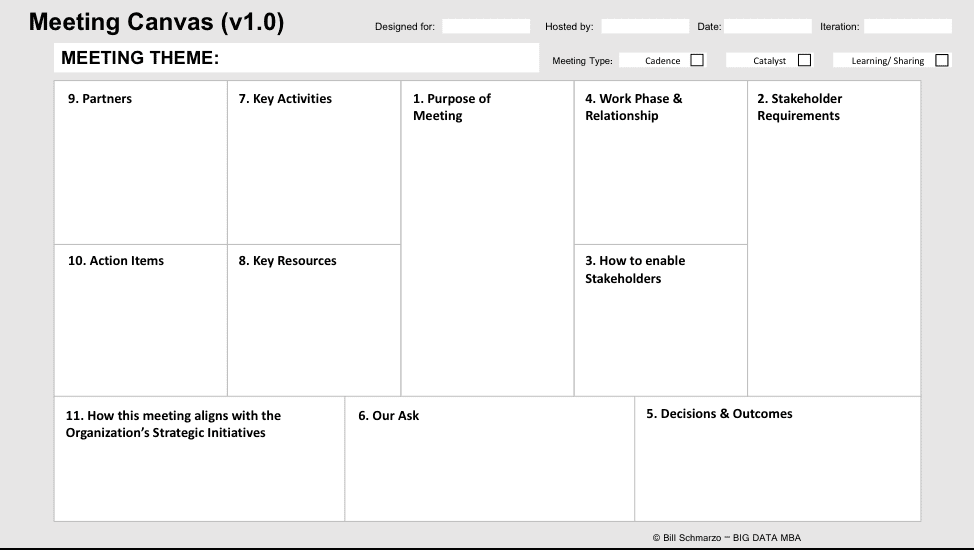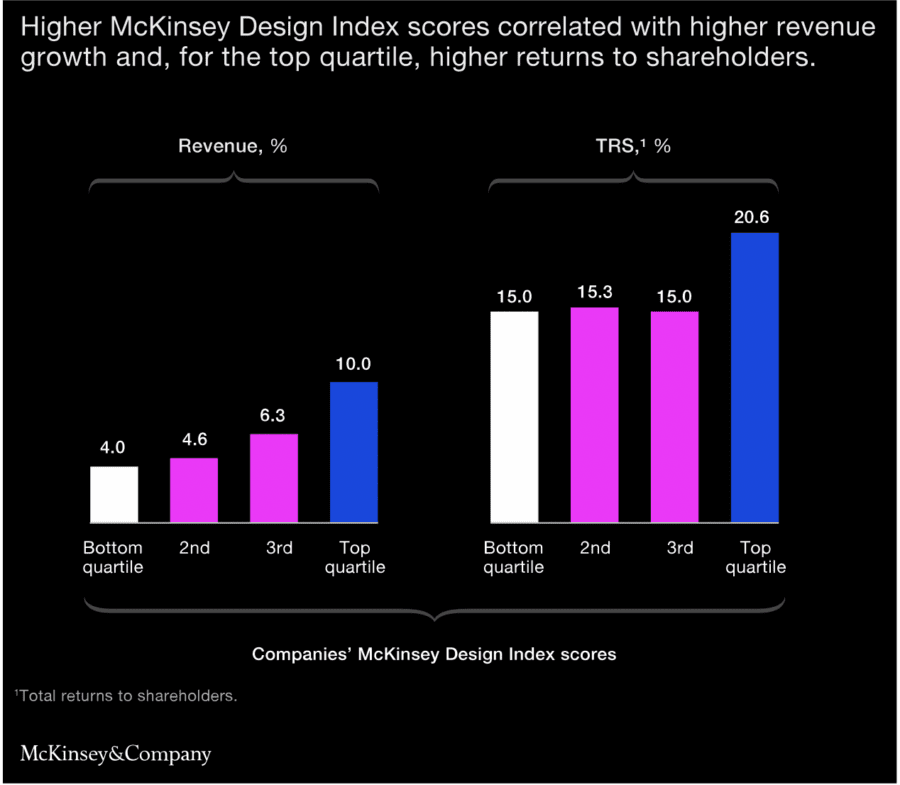Design is very easy to comprehend when you are building customer-centric products or services. Heck, it makes total sense to start from the customer perspective and to use the multitude of design thinking techniques to identify, validate, value and prioritize customers’ most important needs. We got Personas, Journey Maps, Storyboards, Prototypes, Mockups, Canvases and such to help us intimately understand our customers, their environments and what it is they are trying to accomplish. We take them through the facilitated “Diverge to Converge” process to ensure that we have a holistic view of their requirements.
But I have even something bigger in mind for Design Thinking. Instead of just using design to build customer-centric products and services, how about using design to create a customer-centric mindset to enable an organization’s digital transformation? And how do we integrate design into the everyday processes of the organization to support that customer-centric digital transformation?
One of the challenges with digital transformation is ensuring that everyone in the organization understands how their role and tasks tie directly to the organization’s digital transformation. My colleague John Morley and I are on a mission – to leverage design thinking to change an organization’s culture in support of its digital transformation.
And what’s more fundamental to an organization’s operations than meetings, an activity that most organizations do poorly and everyone hates.
Want To Change The Culture? Let’s Start with Meetings!
Let’s face it, most meetings suck. They are boring, loosely structured and usually a waste of time for all the participants except the organizer. We invite the wrong folks, forget the right folks, don’t properly prepare the attendees for the meeting and usually walk out with a poorly understood set of action items. Yea, meetings suck.
Check out these meeting factoids from the site“The Curse of the One-Hour Meeting”:
“Every day in the U.S., there’s an average of 11 million meetings taking place. The average office employee spends over five hours each week sitting in meetings and over four hours preparing for them. That’s more than an entire working day devoted to meetings. Managers fare even worse, logging an average of 12 to 14 hours a week in meetings. Sources tell us it’s only getting worse, with meeting frequency increasing year over year.”
Here are some sample quotes about meetings from a number of sources including the articles “The 16 types of meeting that get work done” “Where The Action Is” by J. Elise Keith:
- “People don’t take meetings seriously. They arrive late, they leave early and they spend most of their time doodling.”
- “People wander off topic! Participants spend more time digressing than discussing.”
- “Nothing happens once the meeting ends. People don’t convert decisions into action.”
- “People don’t tell the truth! There’s plenty of conversation but not much candor.”
- “Meetings are always missing important information – so they postpone critical decisions.”
- “Meetings never get better. People just make the same mistakes again and again.”
- “Make a decision! Move faster! Analysis Paralysis!”
- “Our meetings are like something out of the ‘The Office’” (that’s actually my quote)
So if you want to change a company’s culture and improve the odds of a successful digital transformation journey, let’s start by applying Design Thinking to the most fundamental of company activities – meetings.
Introducing the Meeting Development Canvas
John Morley and I collaborated to see how we could use the Stratgyzer.com Business Model canvasconcept to make meetings more effective and productive; to ensure that each meeting participant understands how the meeting ties back to the organization’s key initiatives (see Figure 1).
Figure 1: Meeting Development Canvas
Let’s review each of the panels on the Meeting Development Canvas:
- Purpose of Meeting: There should be one primary purpose for each meeting that satisfies and aligns the objectives of the Stakeholders. The meeting can seek to satisfy multiple objectives that support that one Purpose. The meeting should nothave more than one Purpose.
- Stakeholder Requirements: A meeting can have multiple stakeholders. The meeting Purpose should aim to enable the Stakeholder objectives It is essential to understand:
- The ‘jobs’ they are trying to do (their objectives)
- The challenges they face in doing them
- The benefits accrued by overcoming the challenges.
- How To Enable Stakeholders: How will this meeting enable the Stakeholders’ objectives (at a high level)?
- Work Phase & Relationship: Describe what phase of the relationship you are at with the stakeholders – Beginning, Mid-way, Nearing Conclusion – with respect to the purpose of the meeting. This means that there may be an orchestrated series of meetings necessary for the successful execution of meeting purpose and the gathering of stakeholder requirements.
- Decisions & Outcomes: What specific decisions and desired outcomes do we need to achieve from this Meeting in order to satisfy the Stakeholder Objectives (outlined in “Stakeholder Requirements”) and deliver on the Purpose of the meeting?
- Our Ask: What are the specific “Asks” of the stakeholders by the meeting organizer?
- Key Activities: What Key Activities will we need to undertake to deliver the decisions and the desired meeting outcomes? These Activities may arise from the ‘Ask’ of Stakeholders in the meeting.
- Key Resources: What Resources (existing & additional) are going to be required to support the Activities outlined in panel #7?
- Partners: With whom will we partner (Internal and/or External) in order to fulfill the key activities or supply Resources that deliver on the Stakeholders’ objectives?
- Action Items: What are the specific Action Items arising from this meeting? They should satisfy:
- The stakeholders’ requirements
- Support the meeting purpose
- Alignment to Corporate Objectives: Specifically, how does the meeting Purpose and Outcomes satisfy the Organization’s strategic initiatives?
The last point may be the most important panel in the Meeting Development Canvas. If there is not a clear linkage between the meeting and the organization’s strategic initiatives, then why are you having a meeting, or more importantly, how can you tweak the meeting to more closely align with the organization’s strategic initiatives?
Also, an important part of the Meeting Development Canvas is how much work needs to be done prior to the meeting, especially key meetings where there are specific Asks. This means that the organizer likely needs to talk to communicate to the participants the meeting purpose and objectives, and capture beforehand the participants’ requirements. Half the battle is won before the meeting even begins!
Summary
The McKinsey article titled “The Business Value of Design” provides numerous factoids to support their proposition that organizations that adopt design are more successful and effective (see Figure 2).
Figure 2: Organizations that Embrace Deliver Better Financial and Shareholder Value
While the Meeting Development Canvas is not likely used for all meetings, it should certainly be used for any meetings where there are specific asks of the different participants, and especially if there might be conflict between the requirements of the different stakeholders.
Conflicts within organizations are not a bad thing; it is almost certainly to happen in organizations where team members have a high degree of ownership for their work. The Meeting Development Canvas isn’t designed to gloss over these conflicts, but is designed to provide a forum and process for the resolution of those conflicts.
Now, isn’t that a great way to start changing and aligning the culture of the organization? Yea baby, that’s the real power of design!


